.Here we see only the head The blade is narrow, single-edged and of a profile unique to the island of Nias. The scabbard is made of dark wood with its two halves fixed together by brass bands. Held at the throat of the scabbard the magic ball covered with teeth Sword of a high-ranking and respected warrior. The well-preserved basket of amulets is a rarity.
The aristocracy of Nias illustrates and documents its authority by the possession of prestigious metal objects. These are above all headdresses and weapons made of gold such as the balato tologu, the sword of high-ranking warriors, as well as neck and arm jewelry. These objects establish a link with the ancestors. The concept of pusaka, the sacred heritage, which represents a direct reference to the ethereal sphere, becomes particularly clear here. The blacksmiths of southern Nias are mostly nobles or descendants of nobles. Since the blacksmith directly intervenes in the social system or cements it by producing objects of rank, his craft is appropriate to the nobility and his work is indebted to it. The shape of the sword is endemic and inimitable, even if the Sumatran influences are undeniable. The term balato is related to belada and palitai, other bladed weapons with a very ancient history in Indonesia. The chronicler Ma-Huan (around 1420) already mentions the Javanese “pula-to”. The scabbards of the important swords of southern Nias are generally decorated with amulet baskets, ragö or raga ifo boaya. This is also the case here. The basket gives a soul to the sword and protects the wielder. The basket, woven from coarse rattan, is covered with large fangs and contains a row of stylized ancestor figurines carved from light wood. The baskets sometimes also contain strips of red cloth, teeth (also of human origin), jimat amulet stones and other objects and, in the case of notable warriors, are covered with the teeth of large predators.



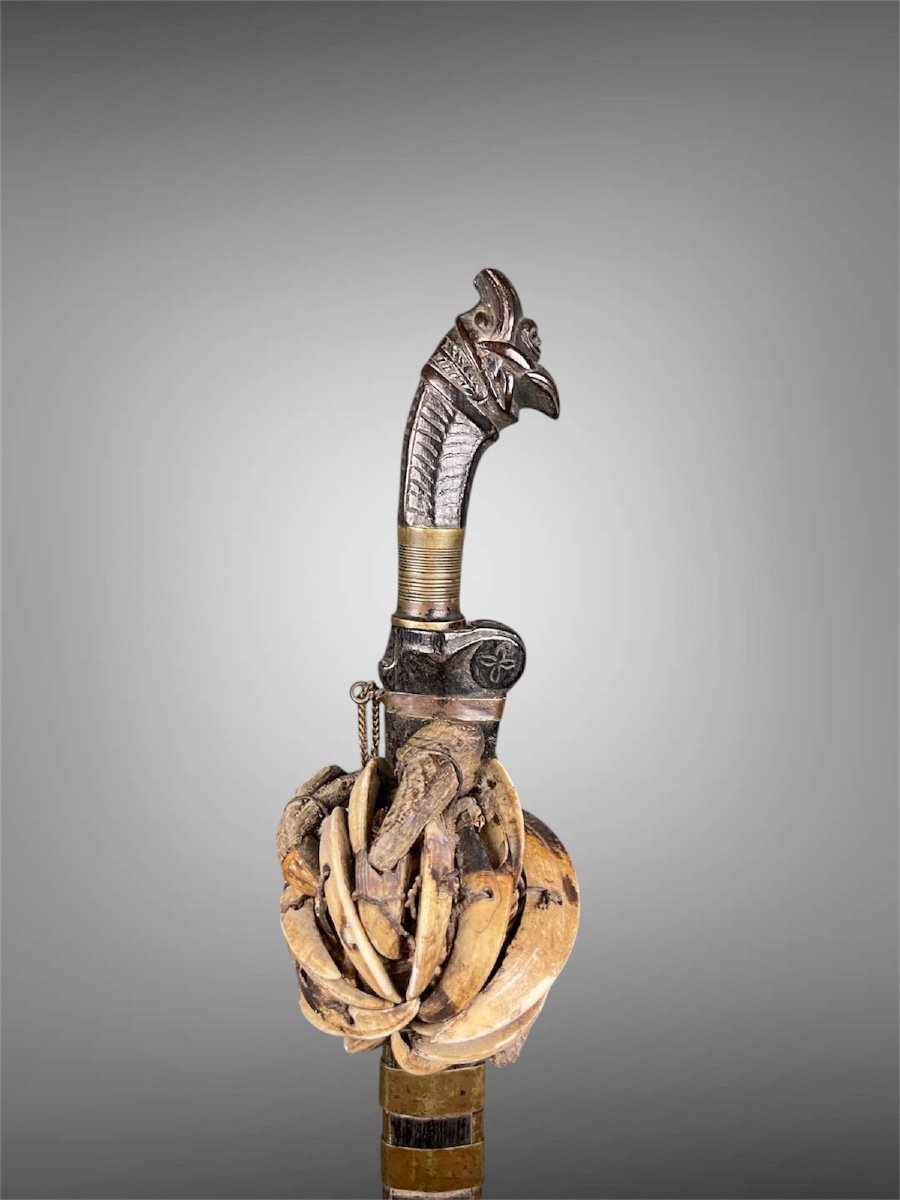
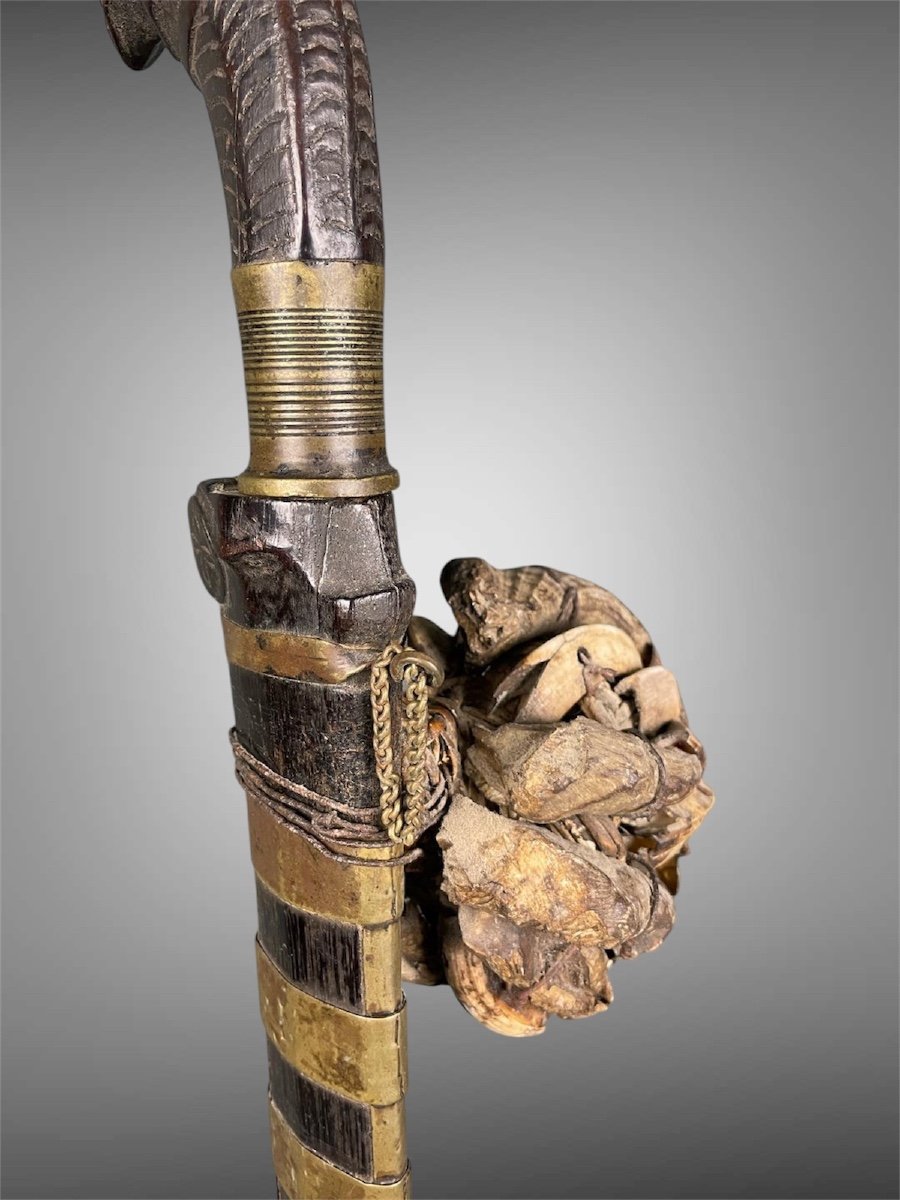

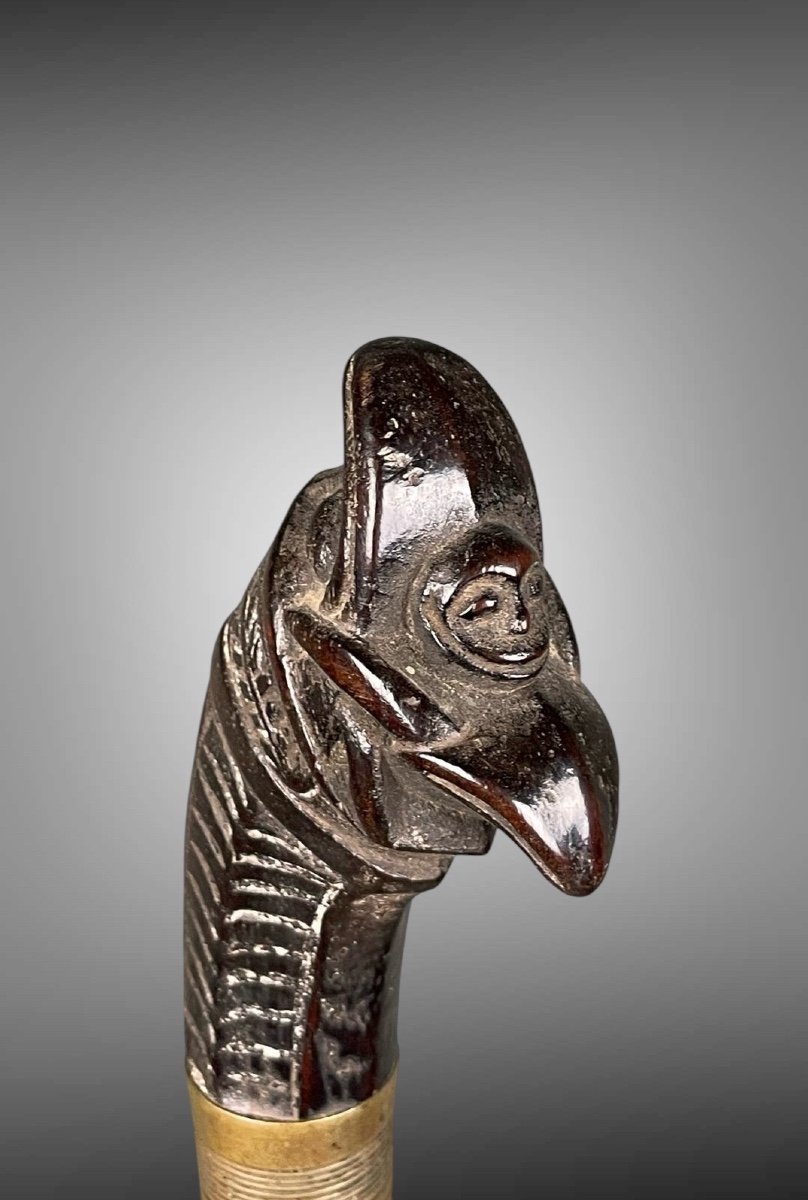



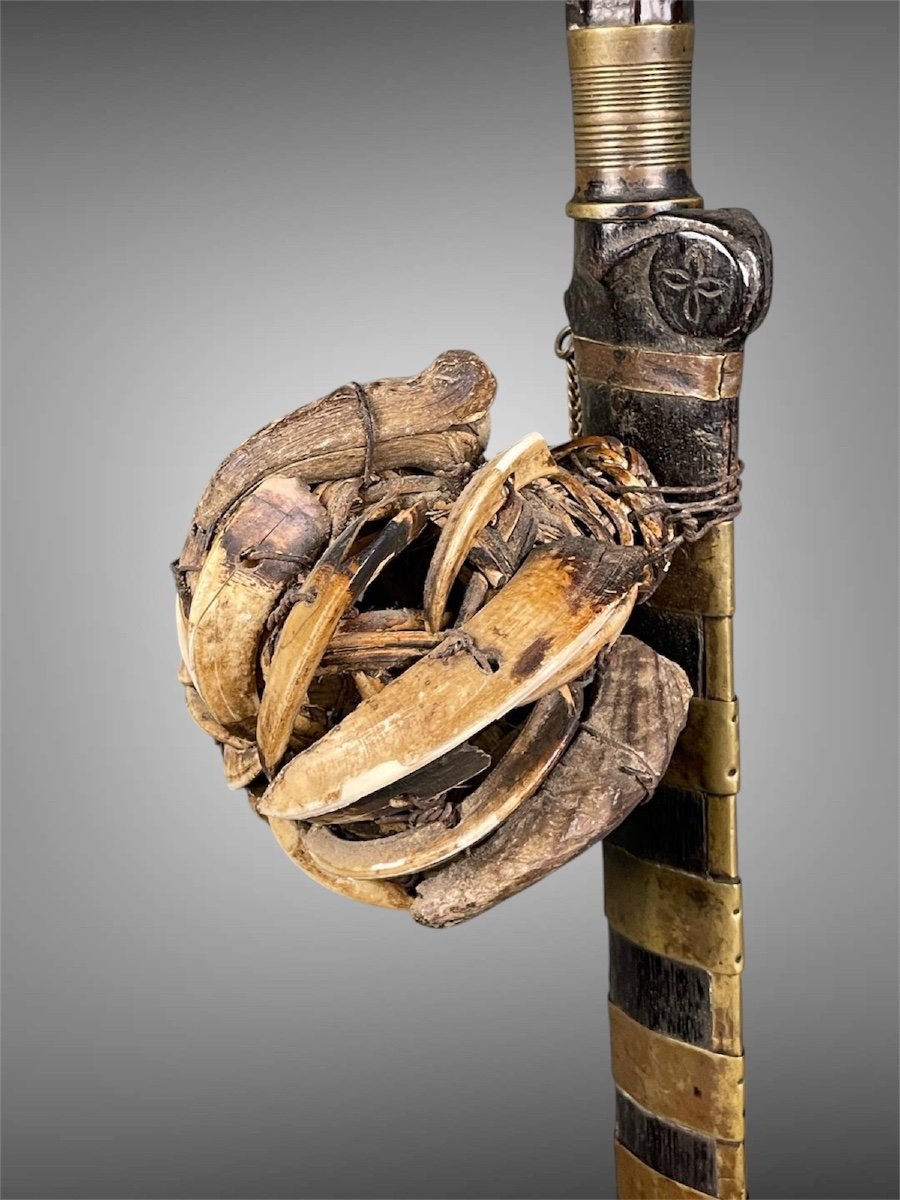


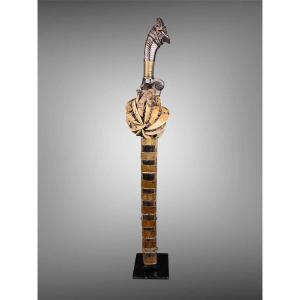














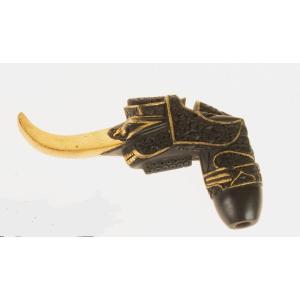
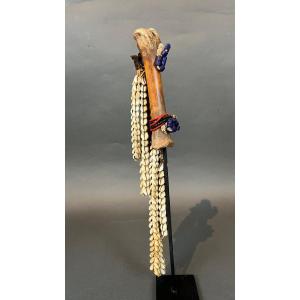
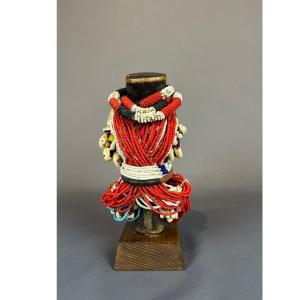




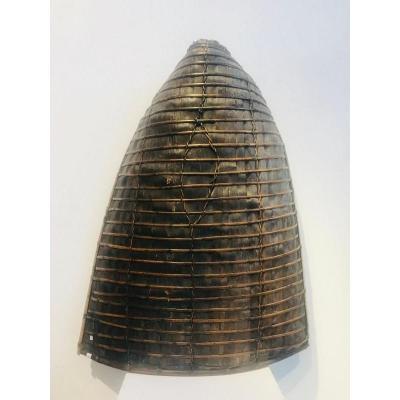




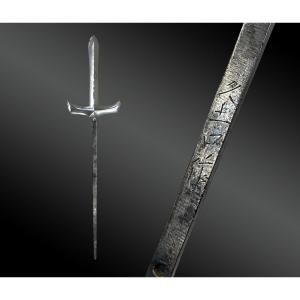







 Le Magazine de PROANTIC
Le Magazine de PROANTIC TRÉSORS Magazine
TRÉSORS Magazine Rivista Artiquariato
Rivista Artiquariato